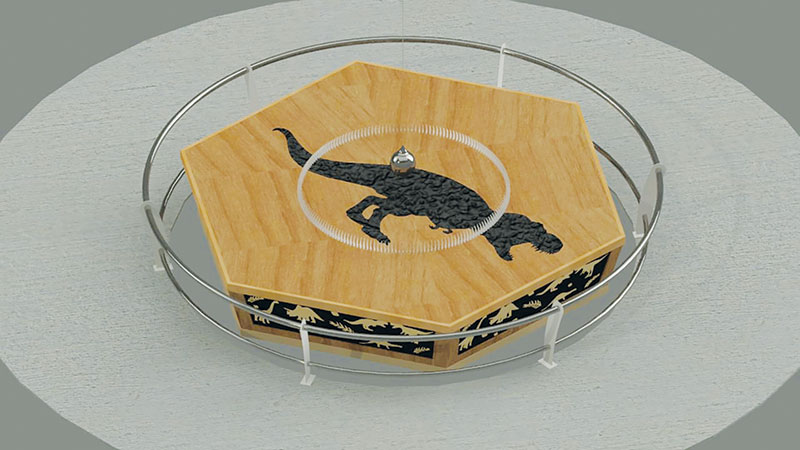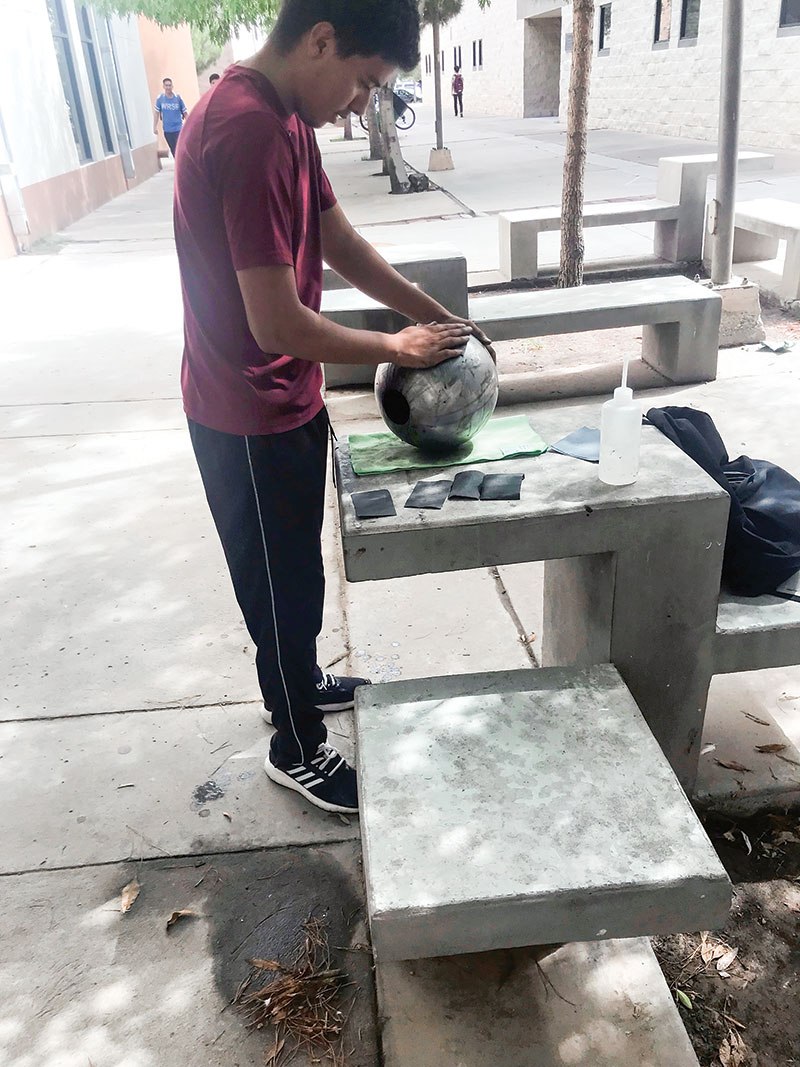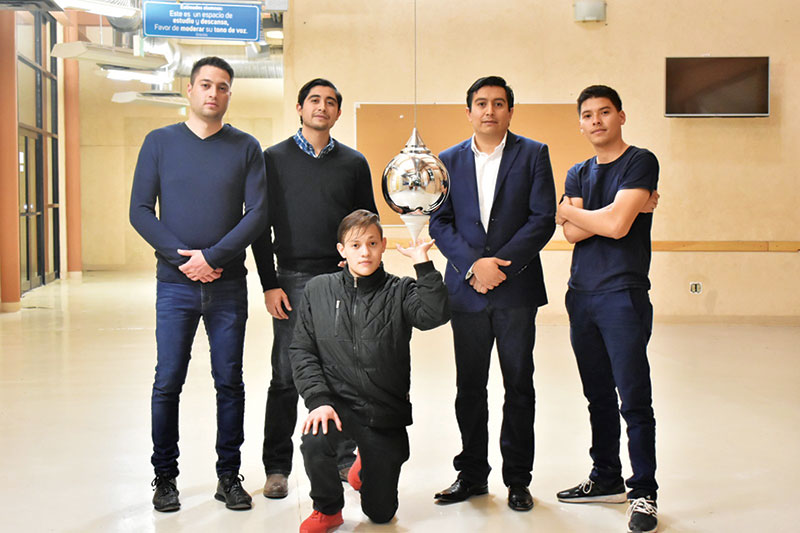Building a “Prehistoric” Pendulum to Promote Curiosity
Winter
2020
Building Blocks - Undergraduate Research and Outreach Projects
Building a “Prehistoric” Pendulum to Promote Curiosity
Julio López Ibarra, Fernando Daniel Hidalgo, Raúl Quiñones Quellar, Gabriel Murguía Morales, Adrian Menchaca Martinez, Dr. Abdiel Ramírez-Reyes, and Dr. Sergio Flores, SPS Members at Universidad Autónoma de Ciudad Juárez, with Kendra Redmond, Editor
 Elementary school students are told that the Earth rotates on its axis. However, internalizing information like this requires a conceptual understanding. We believe that physical demonstrations, such as Foucault pendulums, can help people develop cognitive processes that will help them better interpret and understand information.
Elementary school students are told that the Earth rotates on its axis. However, internalizing information like this requires a conceptual understanding. We believe that physical demonstrations, such as Foucault pendulums, can help people develop cognitive processes that will help them better interpret and understand information.
The SPS chapter at the Universidad Autónoma de Ciudad Juárez received a 2019 SPS Chapter Research Award to design and construct a Foucault pendulum with trajectory-tracing sensors and a data display. Our goal is to develop this pendulum for our local science museum, La Rodadora. This will help raise scientific curiosity in the Juárez community and generate data to analyze in physics classes.
Introduced in 1851 by Michael Foucault as experimental proof of the Earth’s rotation, the Foucault pendulum consists of a large mass suspended from a cable. The top of the cable is attached to a fixed point two or more floors above the mass. As the pendulum swings back and forth, its plane of oscillation rotates clockwise in the Northern Hemisphere, demonstrating the rotation of the Earth. The full motion of the Foucault pendulum reflects the coupling of the rotation of the Earth and the oscillation of the pendulum, leading to a precession. The motion is affected by different conditions, such as air circulation and friction in the support, that can sometimes lead to nonperiodic motion.
Most studies consider the mass to move only in the horizontal plane and not in the vertical plane due to its low-amplitude oscillation. In this case, the motion depends primarily on gravity, tension, and the Coriolis force and is usually solved analytically. Once our pendulum is operational, we would like to contrast theoretical pendulum models based on classical mechanics with actual data to get a deeper understanding of the variables involved in its motion.
We have made great progress on the design and learned a lot about design software along the way. The pendulum mass consists of a steel shell surrounding a lead mass (in the form of pellets) and finished with a chrome coating. A wireless position sensor will be attached to the mass, and data will be collected and displayed in real time on an LED screen. The pendulum arm will be a stainless steel cable approximately 20 meters long, supported by an existing dome inside the museum. The pendulum will be surrounded by a security structure. The projection plane will feature a paleontology-themed design.

We have a prototype of the pendulum mass and a functional prototype of a Foucault pendulum for student data calculations. We are working very hard on the tracking system and hope to have it ready soon. We are also making changes to our support structure design, informed by the results of a test run. The final steps will include designing the informative module that will be displayed with the pendulum and then installing, calibrating, and sharing the pendulum with our community.
The pendulum will be housed in the Dome of Paleontology at La Rodadora. One of the biggest challenges so far has been modeling the displacement of the system to determine the appropriate height and mass for our pendulum, given our allotted space. In addition, we had to consider the aesthetics of our system and develop an artistic concept that integrates the paleontology theme. We look forward to completing this project and having a physics demonstration that we can share with the city of Juárez along with data that we can analyze.

More from this department
Building Blocks - Undergraduate Research and Outreach Projects
